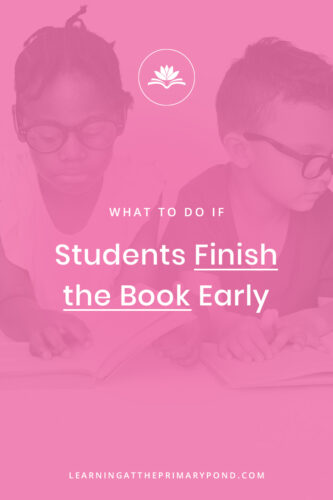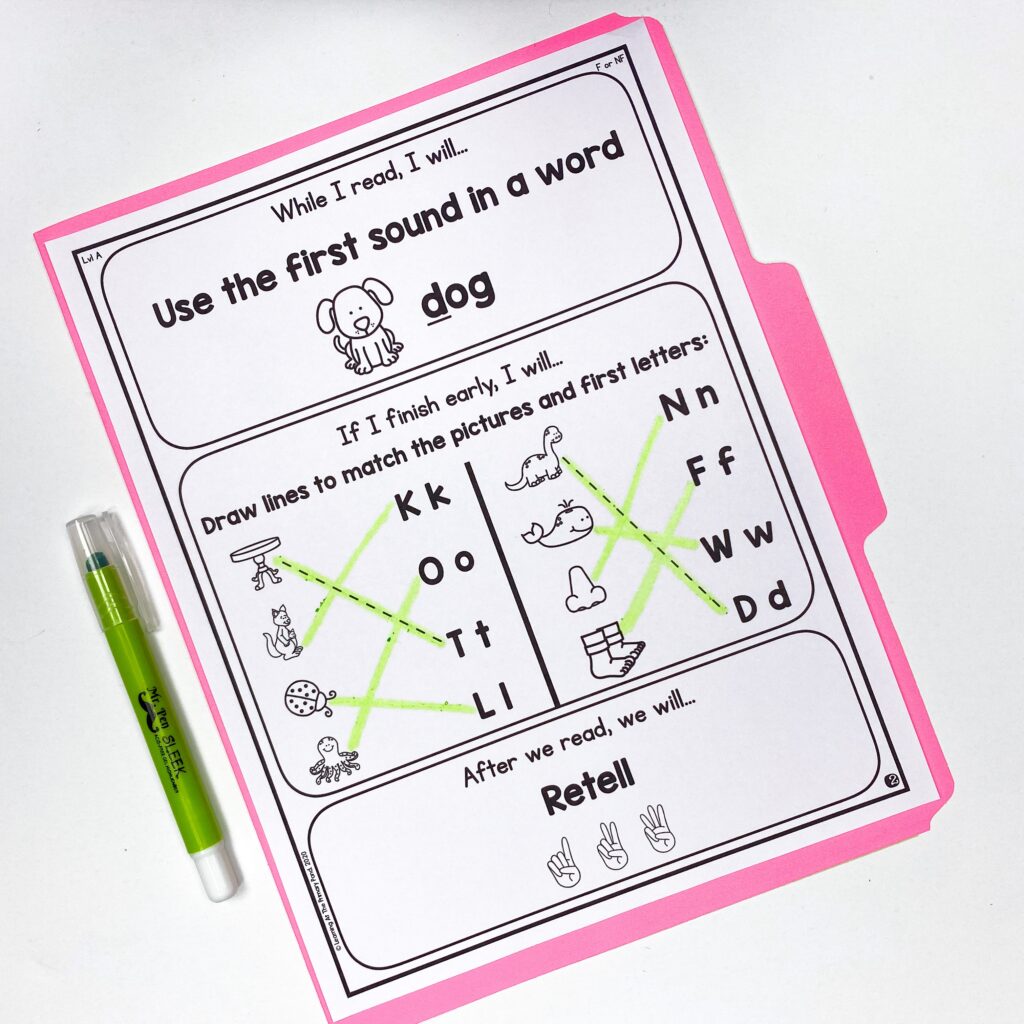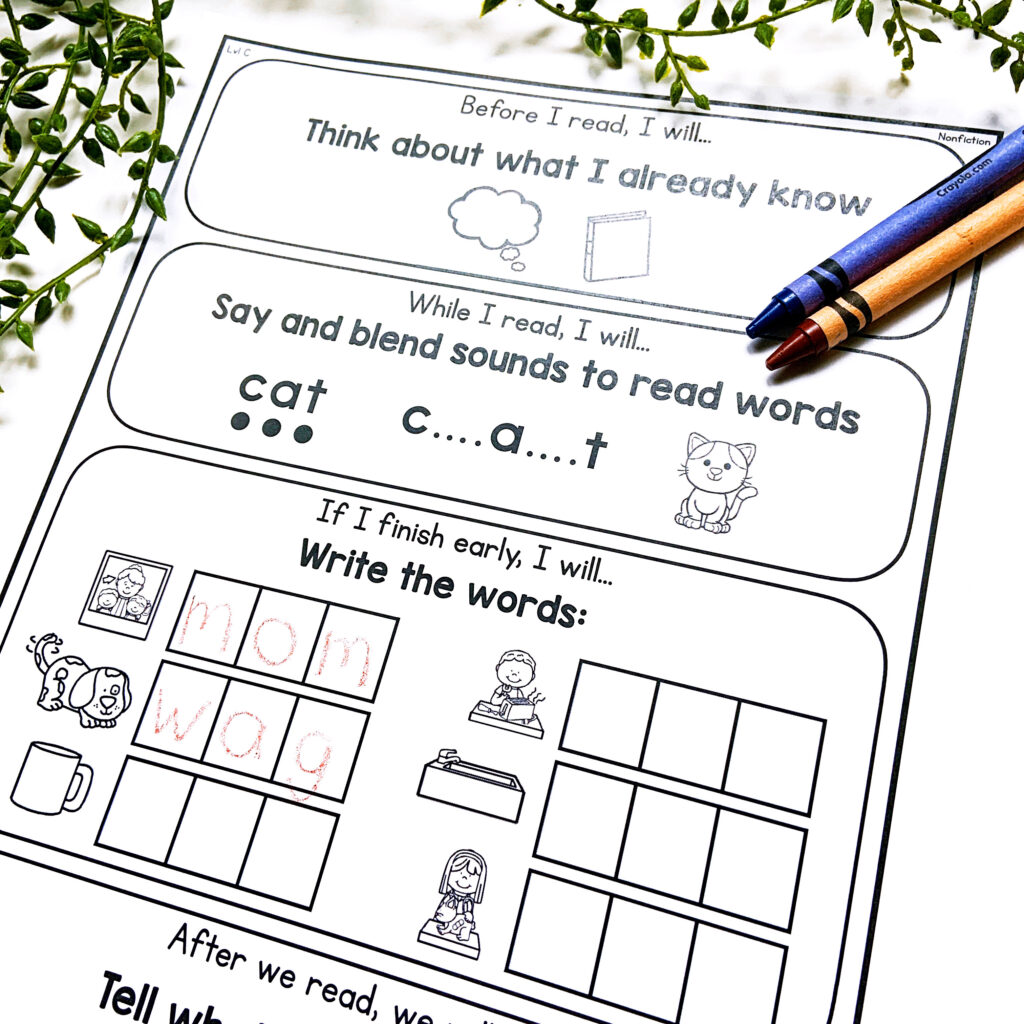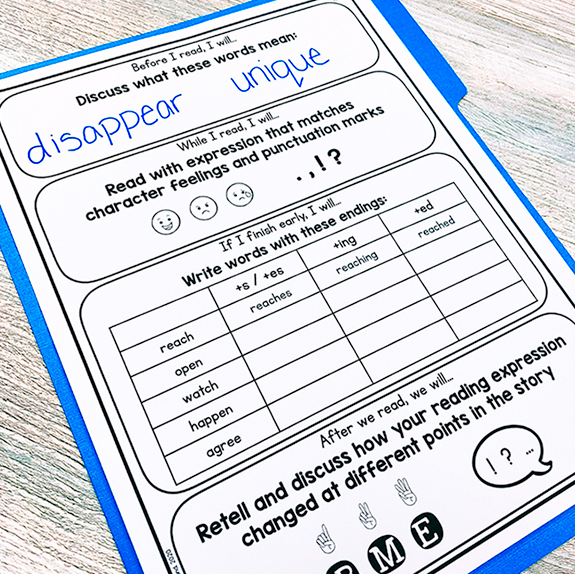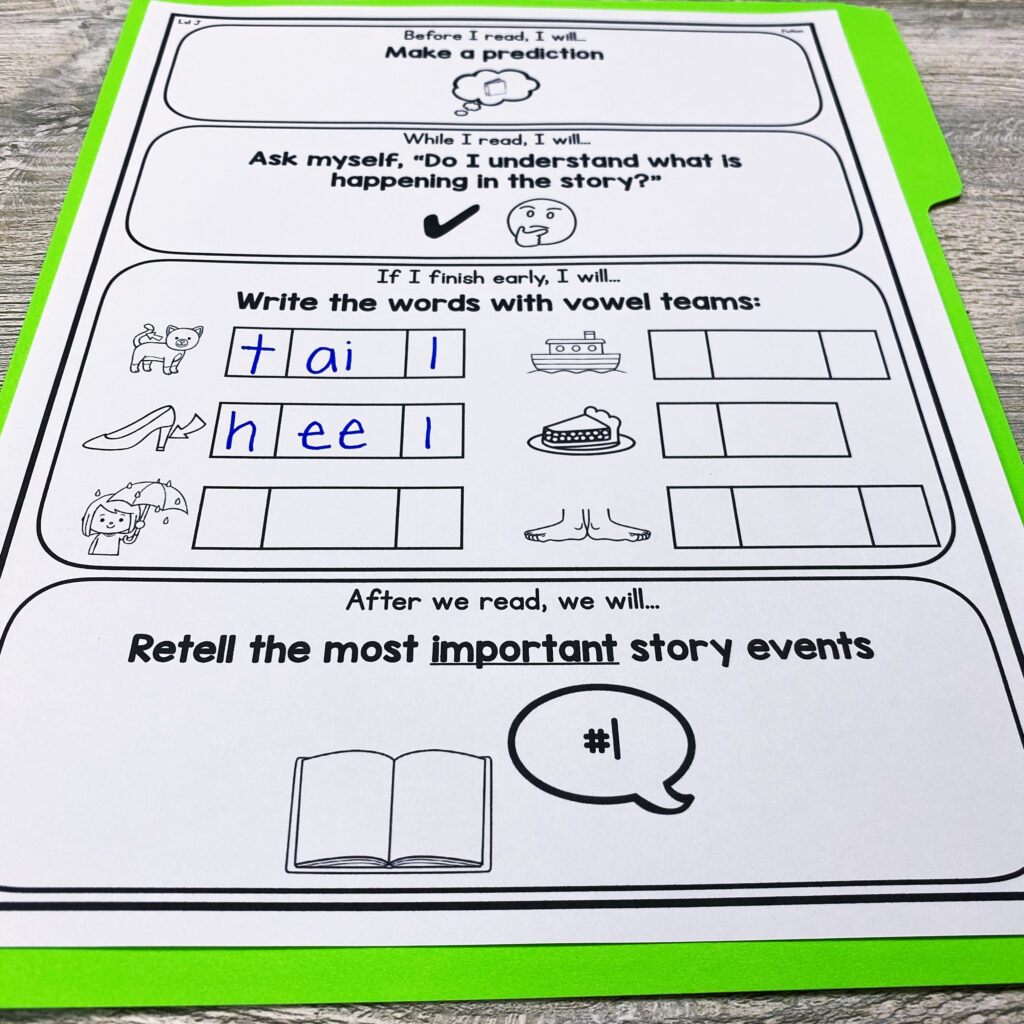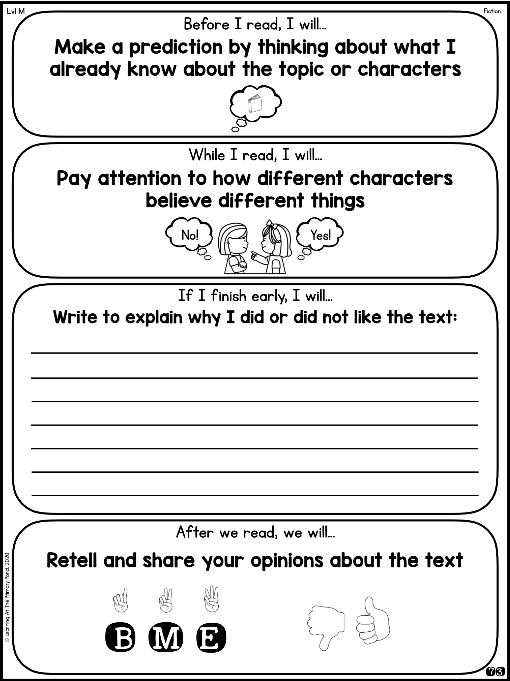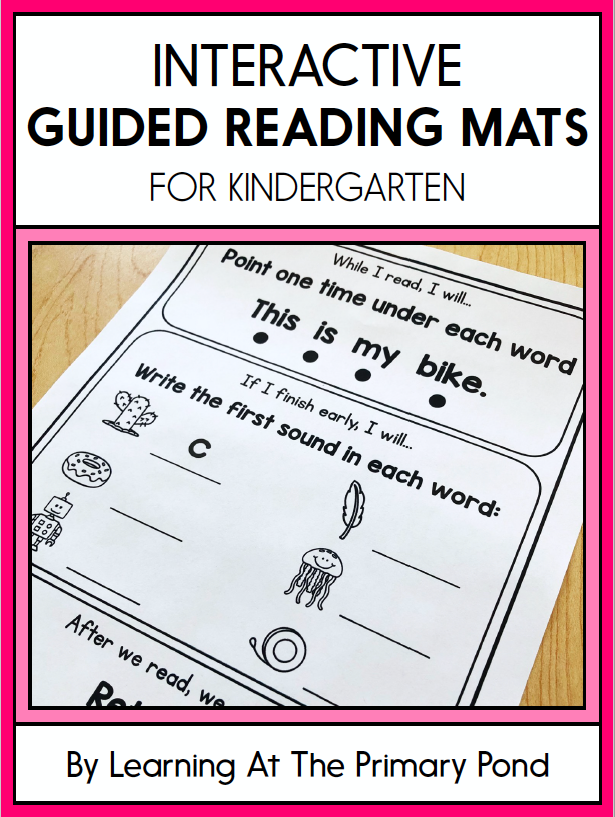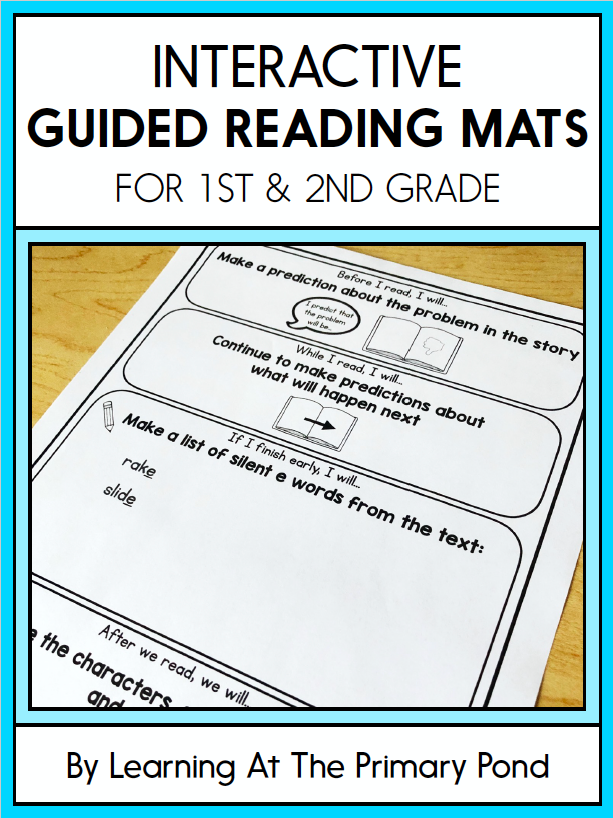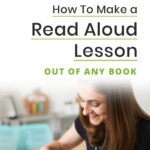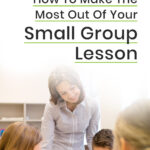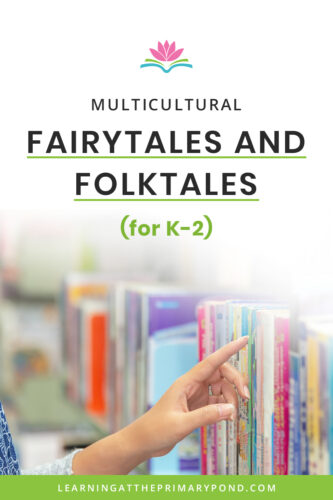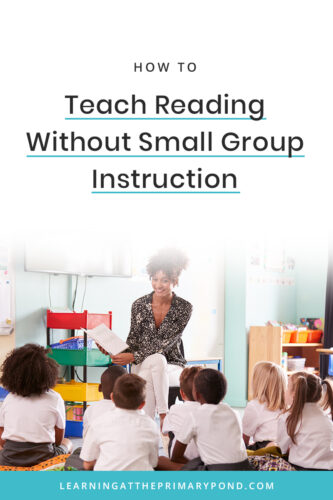There’s a lot to consider when planning for a guided reading lesson. There’s creating a guided reading schedule, choosing texts, and then deciding on which lesson type will be the focus for each group.
This can all be a bit…well…overwhelming to say the least! ?
You think that you’ve planned for everything, and then in the midst of your lesson you hear this from a student: “I’m done… now what?!” ?
We know that not all students read at the same rate, so it’s inevitable that some students will finish before others.
“Read it again!” is my favorite fall-back for when students finish the text early during guided reading. Rereading promotes fluency and deeper comprehension.
But sometimes just rereading gets old. Right?!
Fortunately, there are many other meaningful things you can have your students do if they finish the text early.
So in this post, I’ll share some strategy-specific activities that will help your students stay on task after they finish reading, and also practice previously-taught skills!

What Types of Activities Should I Use?
The types of activities that you implement should be based on:
- Skills that have been previously taught
- Skills that align to students’ approximate reading level
To the first point, you want to have kids practice skills that you’ve already taught – because this is supposed to be an independent activity. Otherwise, students will still need your help. (And you’ll probably be busy listening to the other children read or supporting them with their reading.)
The activities should also align with students’ approximate reading levels. For example, a student reading a Level A text might look for words with a specific letter or match rhyming pictures. However, a student reading a Level J text might write to describe a main character or write words with vowel teams.
When we choose activities that address previously-taught skills AND are appropriate to students’ approximate reading levels, we’re setting our kids up to work productively!
Level-Specific Activities
Now let’s talk specifics!
You probably already know that “early finisher” activities at the lower reading levels will be simpler than those for higher reading levels.
But it’s also important to realize that many skills and activities are relevant to multiple levels! Kids need to practice a skill more than once.
Examples of skill-specific activities at the Kindergarten level include:
Level A:
- Match pictures to the first letter in a word
- Trace alphabet letters
- Write the first letter in a word
- Match rhyming pictures
Level C:
- Write CVC words
- Draw a picture about the story
- Match pictures to medial vowels
- Write words from the text in a word family
Level E:
- Write -ing and -ed words from the text
- Write CVCe (silent e) words
- Write a sentence about the problem in a story
- Draw a picture to show a fact you learned (from a nonfiction text)
Examples of skill-specific activities at First and Second Grade levels include:
Level G:
- Make a list of CVCe (silent e) words from the text
- Write plurals from the text (words with -s or -es)
- Spell r-controlled vowel words
- Write 2 sentences to explain what the text is mostly about
Level I:
- Fill in missing vowel teams
- Write sentences about the beginning, middle, and end of a story
- Write to tell how you will use the information in your own life
- Look for words with vowel teams
Level M:
- Write to explain why you did or did not like the text
- Create a new text feature for a text
- Write words with diphthongs
- Write a new solution to the problem in a story
And remember, an activity can be used with more than one level! 🙂 Reading levels are not an exact science.
Finishing Time
Even if you’ve got some great activities for early finishers, you may wind up with this problem:
Your early finishers get started on these awesome activities. But then the rest of the group finishes the text and it’s time to discuss! So the early finishers are now feeling like they have not finished their work! ?
There are lots of possible solutions to this, but here are a few:
- Have students finish the activity as independent work / in centers
- Keep the sheet and have students finish the activity the next time they come back to the group
- Have the entire group work on the activity
Need Guided Reading Support?
The guided reading pages shown in this post are from my Interactive Guided Reading Mats.
These mats include early finisher activities, but there’s a lot more to them.
The mats can help YOU choose appropriate focus strategies for your lessons.
They help students remember to use specific strategies as they read (with visual aids – great for all kids, but especially for English Language Learners).
To learn more about the mats, click below on the Kindergarten set or 1st & 2nd grade set:
Happy teaching!
